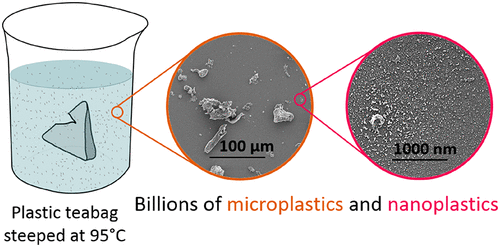It's in Environmental Science&Technology, ironically published by the American Chemical Society, which once upon a time knew what peasants 500 years ago knew - the dose makes the poison. But they wave their own scaremongering away with "possible health effects of ingesting these particles are currently unknown" when what studies really show is that there is zero evidence trace amounts are harmful. However, chemophobia sells, and even ACS wants to sell itself to media outlets.
There is a kernel of science truth they invoke before they leap into speculative hysteria. Over time, plastic breaks down into tiny microplastics and even smaller nanoplastics, the latter being less than 100 nanometers (nm) in size. That is just like every other product, including paper tea bags and even metal if you use an old tea ball. The difference is that this nanoplastic they are scaring us all about is 1/750th the width of a human hair. And while no one recommends eating hair, ACS is not publishing articles terrifying the public about trace occurrences. 
If you believe in homeopathy, or that hazard and risk are the same regardless of dose, you should be concerned. If you understand chemistry, biology, or toxicology, laugh now before this appears in Mother Jones.
Because there are no human effects the authors dosed up aquatic organisms called Daphnia magna, or water fleas, which are "model organisms" often used in environmental studies the way mice are. And with as little human relevance. They are not little people so the work is automatically placed into the "exploratory" pile, even though ACS will write provocative press releases suggesting human effect anyway.
The authors purchased four different commercial teas packaged in plastic teabags, removed the tea, and washed the empty bags. Then, they heated the teabags in containers of water to simulate brewing conditions. Using electron microscopy, the team found that a plastic teabag at brewing temperature released about 11.6 billion microplastic and 3.1 billion nanoplastic particles into the water.
While still nothing it was higher than more rigorous (and better controlled) experiments found so the authors are pushing the alarm button. And the little critters subjected to 10,000X doses survived but the authors worried about some unsurprising anatomical and behavioral abnormalities.
Their press release concludes by saying more study is needed if their might be "subtle" effects in humans, which is codespeak for hype that has failed to be shown as science in the last 25 years, like chemical cocktails and endocrine disruption.




Comments